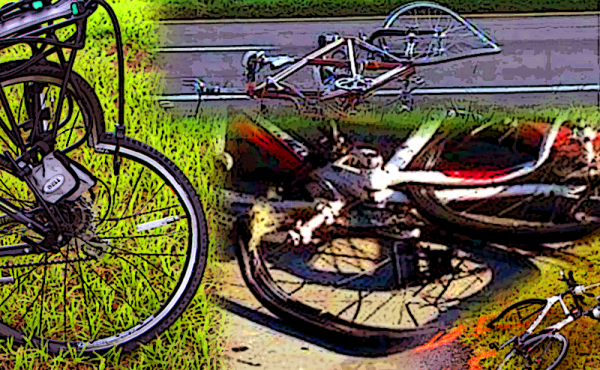
For decades competent and trained cyclists have had to deal with the occasional ignorant motorist who hollers out some variation on “Get off the damn road ya idjyit, yer gonna get yerself killed!” Fortunately most of these incidents don’t escalate into anything serious, and while little has been done to change this attitude over the years, we could shrug off such blather with confidence that the logic of our road use was supported both by direct personal experience and objective scientific study. We also had the backing of the League of American Bicyclists to defend our rights, if only in words.
Well, things have changed. With its recent sophomoric “study” of fatal bicyclist crashes and subsequent statements by its executive director, the League has joined the chorus of ignorance in agreeing that bicycling on regular roadway lanes is “gonna get you killed.”
Fear of the overtaking motorist has been a key arguing point between those supporting separated facilities as the primary accommodation for bicyclists, and those who prefer bicyclists be treated as normal vehicle drivers.
Last month the League released a report on bicyclist fatalities entitled Every Bicyclist Counts. A key finding noted by the League and other bicycle organizations is that 40% of bicyclist fatalities involved an overtaking motorist. This finding varies significantly from other studies and has caused quite a stir amidst bicycle advocates. The fear of the overtaking motorist has been a key arguing point between those supporting separated facilities as the primary accommodation for bicyclists, and those who prefer bicyclists be treated as normal vehicle drivers.
Most notable in the various reporting following the publication of this report is an interview of League President Andy Clarke by BRAIN (Bicycle Retailer And Industry News) in which he attempts to make a connection between the 40% claim and the increasing desire to provide “protected bike lanes”:
Andy Clark: For the longest time it’s been an article of faith that we should be taking the lane, and that separated bike facilities are unnecessary … well, I think we are grown up enough now to say that’s not the case. Most people feel more comfortable actually having a paved shoulder or a cycle track or having a buffered or protected bike lane, and those things will reduce the fear and the incidence of being hit from behind. And we shouldn’t feel bad or awkward about saying that.
BRAIN: So this data reinforces the movement toward separated facilities?
AC: Yes, it reinforces and validates that approach. There is still a small, tiny percentage of people who think we should not be putting in that kind of infrastructure. They are hanging on to the idea that being hit from behind is not that big of a problem. Well, the data tends to suggest otherwise.
There are still going to be places where there isn’t that kind of infrastructure and you are going to need to know how to cope with that. So we are not diminishing the need for the kind of education programs that we have presented and are going to continue to present. But we are saying that infrastructure can and should play a role in eliminating some of the most serious kinds of crashes.
By undercutting the essential practice of lane control, Clarke is dismissing the key defensive driving strategy taught in the League’s own education program, not to mention that of every serious adult cyclist education program.
With such a statement from the League, this 40% overtaking claim is highly significant for those of us who believe bicyclists are drivers of vehicles and wish to protect our rights to use regular roadway lanes. Lane control mitigates many motorist-caused crashes due to turning and crossing conflicts, as well as overtakings, the majority of which are sideswipes in which the motorist is well aware of the cyclist’s presence. By undercutting the essential practice of lane control, Clarke is dismissing the key defensive driving strategy taught in the League’s own education program, not to mention that of every serious adult cyclist education program. A thorough review of the League’s methodology and analysis is called for.
This review will address a number of important shortcomings of the League’s report, including:
- Their method of selecting crashes for assessment
- Questions of how crashes are categorized
- Key differences between urban and rural crashes
- Alcohol & drugs and cyclist use of lights and reflectors — two key factors in overtaking crashes
Bias in Crash Selection
 Right up front the League’s methodology for selecting and analyzing crashes has a built-in bias. The report states clearly that:
Right up front the League’s methodology for selecting and analyzing crashes has a built-in bias. The report states clearly that:
The majority of the information captured by Every Bicyclist Counts came from newspaper reports (56% of all reported sources), TV reports (25%) and blogs (19%).
Using news reports creates bias at two levels. First off, the types of stories that are most heavily reported are those involving the “good cyclist.” The person who is “just like us,” riding a well-maintained, good quality bike, wearing a helmet and obeying the rules. As one who has been following both media attention and official crash data for 20 years, I can tell you the story of the homeless alcoholic hit while crossing a dark arterial at night without lights or reflectors gets scant attention from the media compared to those “good cyclists.” As the League notes, their study misses about 24% of the crashes. It’s quite reasonable to expect that the characteristics of those missed fatalities vary significantly from those they reviewed.
Next, the fact that the League’s sources are from the media rather than the official crash report means the facts have been filtered through a reporter, or a number of reporters. While we can certainly question the accuracy of official police reports in cycling crashes, we certainly aren’t getting more accurate information from the media, since they are themselves getting most of their information from law enforcement.Yes, an insightful analyst can spot inconsistencies or details that show flaws with the reporting, but that rarely tells us what actually happened, it only tells us what may not have happened.
Media reports can only be less accurate than official crash reports, because reporters only report what they’ve been told by law enforcement.
The League illustrates the difference between their methodology and that of official sources:
Approximately 40% of fatalities in our data with reported collision types were rear end collisions. This is higher than what was found in the 2010 FARS* release that included PBCAT-based crash types (27% of fatal crashes with reported collision types), although the crash type “motorist overtaking bicyclist” was the most common collision type in that data as well.
*Fatal Accident Reporting System
Why would overtaking jump from 27% to 40% in 2 years? This speaks more to the problems with their methodology than to what’s actually happening. Their reporting of helmet use by the victim does so as well:
Among the fatalities tracked by Every Bicyclist Counts, only 150 of the 633 reported fatalities included information on whether the cyclist was wearing a helmet. In the majority — 83 or 57% — of those fatalities the cyclist was wearing a helmet. This is higher than other data sources that record helmet use have reported.
Again, this illustrates the bias in their event selection. Crashes involving “responsible cyclists” (sympathetic victims) are more likely to be counted than the ones involving intoxicated homeless persons.
Categorization
The League’s crash typology is nothing like the FHWA crash typing, and vagueness of some of the “types” leave many questions. Without a consistent typology it’s very difficult to compare results. For example “Cyclist side/car front” could mean a number of different crash types. It could mean either a cyclist being hit by a motorist who ran a red light or stop sign, or the opposite. The same goes for a “T-Hit.” Since free crash typing software is available from pedbikeinfo.org it’s a shame that they didn’t take advantage of it so we could compare it to other reports.
“Sideswipe” is normally included in overtaking. The FHWA typing also includes “cyclist sudden swerve,” and “cyclist lost control” in the overtaking group. I cannot tell if cyclist sudden lefts or swerves are included in the overtakings.
[box]
Overtaking crash types:
[tabs slidertype=”simple”] [tab]

Motorist hits a bicyclist who is directly in front of him. Such crashes normally involve a night-time crash with a cyclist without lights or reflectors, or an exceptionally impaired motorist, either intoxicated or asleep.
[/tab] [tab]

Motorist overestimates passing space and clips bicyclist.
[/tab] [tab]

Motorist drifts into bicyclists (usually in shoulder or bike lane). May involve distraction; often occurs on bends or curves.
[/tab] [tab]
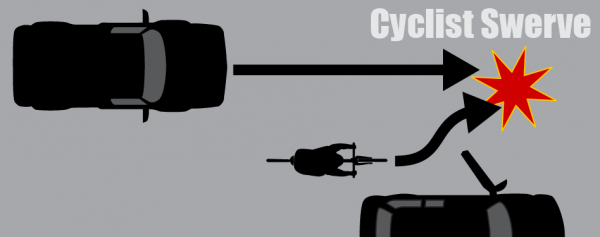
Bicyclist swerves into motorist’s path while attempting to avoid a suddenly-appearing hazard.
[/tab] [/tabs]
While a direct hit from behind is what most people fear, that type only makes up a small portion of overtaking crashes. Each crash type has different causal mechanisms and different countermeasures. Lumping them together creates misleading message about the safety of bicycling—specifically, the ability of bicyclists to discourage or prevent motorists from hitting them.
[/box]
Their “unknowns” are exceptionally high, at 30%; probably because media reports tend to be quite sketchy. By comparison, for my review of cyclist fatalities from official crash reports, only 3% fell into the “unknown” category. These usually involved a cyclist found dead after a hit & run. Their categorization also includes “None,” which I presume to be a solo cyclist crash with no other vehicle involved.
The League report’s 40% overtaking was arrived at by ignoring 41% of the crashes.
Already we have 24% not reviewed at all, and another 23% of the remaining 76% set aside as “unknown.” So 41% of the fatalities during the study period were not categorized by the League. The 40% overtaking was arrived at by ignoring 41% of the crashes. The League’s overtaking percentage drops to 31% with the “unknowns” included, which is of course much closer to the 27% overtaking from FARS.
Urban Versus Rural
In the League’s report we are shown that 31% of the crashes were on rural roads and 69% on urban roads (which includes suburban). But their data does not tell us what proportion of the rural or urban crashes involved overtaking. This matters because the League is arguing for separated urban bikeways based on that 40% number.
My review of 105 cyclist fatalities in the Orlando metro area (a predominantly suburban area) since 2006 found 15 overtaking deaths (14%). Of those, nine were rural and six were suburban. None were in an area one would characterize as strictly “urban.”
The State of North Carolina has provided a rich source of statewide bicyclist crash data online using official crash reports and the standard FHWA crash typing scheme. Using their online database I found that 34% of their fatals were overtakings, and 37% of all fatals were urban/suburban, but their online interface would not provide a cross-tabulation of rural/urban and crash type, so we cannot get a direct read on how many urban/suburban fatalities involved overtaking. We’ll have to estimate that from other factors. If one assumes that urban and rural overtakings are just as likely to result in a fatality, then 48 of their 129 fatal overtakings would have been urban, which works out to 12.7% of the 379 cyclist fatalities in their database. But rural and urban crashes are not equal in their severity. The NC data shows rural crashes were 3.6 times more likely to result in a fatality than urban crashes (4.7% versus 1.3%), so let’s divide those presumed 48 urban overtakings by the 3.6 times higher fatality potential of rural crashes. That gives us 13 urban overtakings, which is 9% of their 140 urban fatalities.
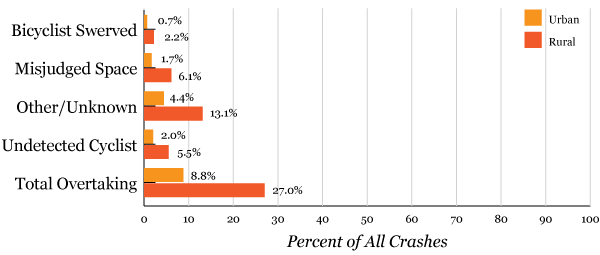
Overtaking crash types as a percentage of all crashes. Source: North Carolina Pedestrian and Bicycle Crash Data Tool
Intoxication and Lighting
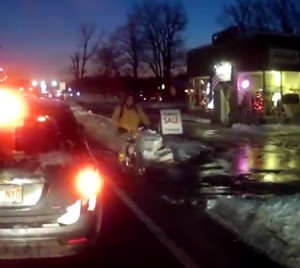 While the League report paid legitimate attention to unsafe and illegal motorist behaviors that led to deaths, such as intoxication, distraction and leaving the scene, it’s also a sad fact that many bicyclist deaths involve cyclists behaving similarly. But the League report was strangely silent on this. In North Carolina’s data 19% of fatalities involved an intoxicated cyclist. In metro Orlando it was 40% overall, two of the nine rural overtakings, and three of the six suburban overtakings involved intoxicated cyclists.
While the League report paid legitimate attention to unsafe and illegal motorist behaviors that led to deaths, such as intoxication, distraction and leaving the scene, it’s also a sad fact that many bicyclist deaths involve cyclists behaving similarly. But the League report was strangely silent on this. In North Carolina’s data 19% of fatalities involved an intoxicated cyclist. In metro Orlando it was 40% overall, two of the nine rural overtakings, and three of the six suburban overtakings involved intoxicated cyclists.
Use of lights by cyclists at night is also a key factor. Of the 15 overtakings in the Orlando metro area, four involved unlit cyclists at night; three of the six suburban overtakings involved unlit cyclists. (Cyclist lighting information was not available in the NC data.)
Undermining Lane Control
In his BRAIN interview, Andy Clarke said:
For the longest time it’s been an article of faith that we should be taking the lane, and that separated bike facilities are unnecessary … well, I think we are grown up enough now to say that’s not the case.
Of the report’s five victim profiles, three involved cyclists in bike lanes or on paved shoulders; none were noted as using lane control in a general purpose lane.
And yet their report did not give us any indication of how many lane-controlling cyclists had been hit from behind. Indeed, they didn’t even provide such an event among their five victim profiles. Of the five crashes, three involved cyclists in bike lanes or on paved shoulders; none were noted as using lane control in a general purpose lane.
In the North Carolina data, we can see the differences between overtaking crashes (for all injury levels) in rural and urban areas.
“Bicyclist Swerved” crashes are of course not relevant to lane control. “Misjudged Space” crashes are broadly understood to be remedied by lane control. “Undetected Cyclist” crashes mostly involve unlit cyclists at night. So it is the “Other/Unknown” that would most likely involve the totally distracted motorist who squarely hits the cyclist from behind. 7.5% of these “Other/Unknown” resulted in fatalities in North Carolina, but of course rural crashes are much more likely to result in fatalities than are urban ones.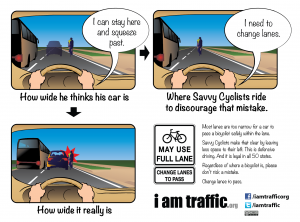
None of the 105 metro Orlando fatalities involved lane control.
The real “article of faith” being presented here is that a practice promoted by the most experienced and highly trained cyclists in our culture is now being dismissed without evidence.
The real “article of faith” being presented here is that a practice promoted by the most experienced and highly trained cyclists in our culture is now being dismissed without evidence. And it’s being dismissed by a national organization that was originally formed to promote safety and excellence in cycling.
Context Matters
There is no question that we need better reporting of bicyclist crashes by law enforcement, but the League’s report only adds confusion, not clarity. We also should use more than just fatalities when making decisions about street design; adding incapacitating injuries will provide us with far more comprehensive data to combat the most serious crashes.
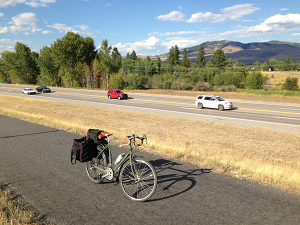 And no, this review of the League’s fatality report is not intended as a blanket refusal of separated bicycle facilities. There are certainly some roads along which a sidepath would work. High-speed rural highways are good candidates. I used an excellent one in the Bitterroot Valley in Montana. Paths along riverfront and lakefront roads are workable as well. And certain suburban high-speed arterials may be suitable for sidepaths or bike lanes if they have limited and well-managed conflict points. But when it comes to regular urban streets, overtaking is the least of our concerns as cyclists. That is where the turning and crossing conflicts are most common, where savvy, integrated cycling is essential, and where channelization of cyclists leads to unnecessary conflicts.
And no, this review of the League’s fatality report is not intended as a blanket refusal of separated bicycle facilities. There are certainly some roads along which a sidepath would work. High-speed rural highways are good candidates. I used an excellent one in the Bitterroot Valley in Montana. Paths along riverfront and lakefront roads are workable as well. And certain suburban high-speed arterials may be suitable for sidepaths or bike lanes if they have limited and well-managed conflict points. But when it comes to regular urban streets, overtaking is the least of our concerns as cyclists. That is where the turning and crossing conflicts are most common, where savvy, integrated cycling is essential, and where channelization of cyclists leads to unnecessary conflicts.
Mighk Wilson is the president of the new American Bicycling Education Association.
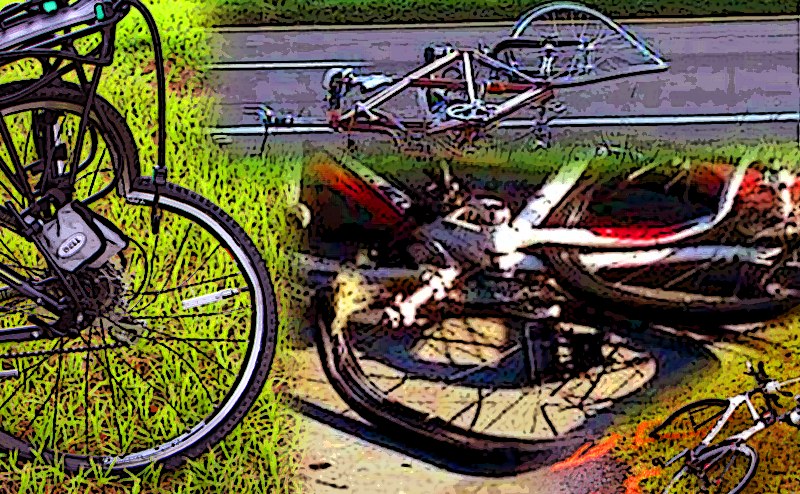
Education is not enough, and it takes ages to sink in.
Have money, will sue; both individual drivers and County governments.
“…adding incapacitating injuries will provide us with far more comprehensive data to combat the most serious crashes.”
Indeed. The profile of non-fatal crashes is so wildly different from that of fatals, and the numbers are so many times higher that considering only fatals is a distraction.
Excellent, Mighk! Thanks again for your professional, extremely competent support of bicycle driving.
Hello Mighk and All,
Kenneth Cross Study for NHTSA:
http://ntl.bts.gov/lib/25000/25400/25439/DOT-HS-803-315.pdf
A total of 36 unique problem types were identified; the ten most frequent problem types
accounted for 67% of the fatal cases and 64% of the non-fatal cases. The
results of the analyses of descriptive data are discussed and the distinguishing
characteristics of each problem type are described. Potential countermeasure
approaches are suggested for each problem type.
Page 229 – Class D Problems (Cyclist struck from behind by motorist)
“Table 36 lists the problem types and subtypes for Class D and shows the proportion of fatal and non-fatal cases that were classified into each problem type and subtype. It can be seen in Table 36 that Class D accounted for nearly 38% of all fatal cases and that nearly one-fourth of all fatal accidents were classified into Problem Type 13.”
“ ….. it is clear that the likelihood of suffering fatal injuries is far higher for Class D accidents than for any other accident class. The high incidence of fatal injuries is mainly the result of the high speed of the motor vehicle on impact.”
“The distinguishing characteristic of Problem Type 13 is that the operator of the overtaking motor vehicle failed to observe the bicyclist until the vehicles were in such close proximity that successful evasive action was impossible. Fifty percent of the non-fatal accidents and 59% of the fatal accidents of this type occurred in a rural area. About three-fifths of the rural accidents and about one-half of the urban accidents occurred on a narrow, two-lane roadway with no ridable shoulder.”
“The exact position of the bicyclist and motorist at impact was difficult to determine with sufficient precision to know whether the bicyclist was traveling too far to the left or the motorist was traveling too far to the right.” [It appears Kenneth Cross supported the concept of slower bicycle traffic keeps Far To the Right.]
“The fear of overtaking accidents and the assumption that this type of accident occurs with great frequency are among the main reasons why on-street bicycle lanes have been so appealing to persons concerned with bicycle safety. Judging from the types of locations where on-street bicycle lanes have been constructed in the past, it appears that decisions about the need for bicycle lanes have been based on the assumption that overtaking accidents most often occur on narrow roadways that carry heavy bicycle and motor-vehicle traffic and have many motor vehicles parked along them. “
“The fear of overtaking accidents is well founded since the likelihood of fatal injuries is indeed higher for overtaking accidents than for any other class of accidents revealed by this study.”
“Except for accidents that resulted from the motor vehicle being out of control, it seems reasonable to assume that most Class D accidents would not have occurred if an on-street bicycle lane had been present and the bicyclist had been riding in it. However, the problem in recommending on-street bicycle lanes as a countermeasure stems from the cost-effectiveness of this approach. First, consider that 46% of the fatal and 44% of the non-fatal overtaking accidents occurred in a rural area where bicycle traffic tends to be low and where it would be necessary to widen the paved area in order to accommodate an on-street bicycle lane.”
“In summary, it seems certain that bicycle facilities (on-street bicycle lanes, off-street bicycle lanes, and paved shoulders) have the potential for reducing the incidence of Class D accidents if the facilities are constructed at the types of locations where such accidents occur and if bicyclists can be induced to use the facilities. It is also possible that bicycle facilities would effect a reduction in other types of accidents as well. However, there are many reasons to doubt that it would be cost-effective to construct bicycle facilities at the types of locations where Class D accidents occur.”
Page 245
“In some instances, it may be safer to ride in the center of the traffic lane than to attempt to anticipate an opening motor-vehicle door. However, as was stated earlier, considerable study is required before recommending that bicyclists be taught to ride in the center of the traffic lane.” [Kenneth Cross did not support bicyclists riding in the center of the traffic lane.]
Page 269
Some bicycling experts believe that many Class F accidents would not occur if bicyclists were taught to ride in the center of the traffic lane rather than along the right-hand curb. They claim that riding in the center of the traffic lane would increase the likelihood that the bicyclist will be detected by the motorist and would eliminate the right-of-way conflicts with right-turning accidents. As was discussed earlier, a number of critical questions must be answered before recommending that bicyclists be taught to ride in the center of the traffic lane (see discussion of countermeasure approaches for Class E accidents). [Again Kenneth Cross is not supporting bicyclists riding in the center of the traffic lane.]
=====================
It appears the theory for a cyclist to ride in the center of the travel lane to be better perceived by motorists …… is based on faith rather than data.
The cyclist puts their safety in the hands of the motorist. These same motorists have about 5479 rear end collisions EACH DAY in the US …….. (and in about 1/2 of them never apply the brakes) in addition to about 10,959 other category crashes EACH DAY in the US according to the NHTSA based on police reports.
Riding a bicycle in front of the trajectory of these motorists and depending on the motorist to avoid hitting the cyclist is a poor bet for the cyclist.
The paucity of data on motorists’/cyclists’ crashes that ride in the center of the travel lane of fast moving motorist traffic allows ‘VC’ or ‘Cycling Savvy’ advocates to tout the advantages of this behavior because so few cyclists practice it.
What do you think?
Cheers,
Neal
+1 mph Faster
Thanks for the thorough research and analysis, Mighk.
I had trouble following the article the first time I read it, and I had to read through it a couple more times, carefully, to understand it. I hope it’s not too presumptuous of me to request some clarifications:
– “…as well as overtakings, the majority of which are sideswipes in which the motorist is well aware of the cyclist’s presence.” What’s your source for this claim?
– Is FARS just the FHWA dataset, or when you talk about FARS and FHWA categorizations are you talking about two different things?
– Does FARS use the same crash types as PBCAT?
– “Cyclist side/car front” and “T-hit” are League categories, not FWHA, correct? It seems obvious from context on a second reading, but it wasn’t immediately clear since you had just mentioned both.
– Does the inset slideshow labeled “Overtaking crash types:” represent FHWA categorization or your own?
– “‘Sideswipe’ is normally included in overtaking. The FHWA typing also includes…” Does the FHWA include the “sideswipe” category?
– “Their ‘unknowns’ are exceptionally high…” Could you change “Their” to “The League’s”?
– “By comparison, for my review …” I’m guessing this refers to your review of metro Orlando fatalities, but you mention it here before introducing it more specifically later on.
Thanks!
please see explanation of far’s use of pbcat here:
http://azbikelaw.org/blog/fars-and-pbcat/
thanks for the review mighk; I think it’s enlightening that the LAB (correctly) considered the methodology ultimately used for EBC paper to be “Not scientific” about two years ago. Though this strong wording did not make it into the report, and of course didn’t pass Andy’s lips when speaking of it now:
http://bikeleague.org/content/why-every-bicycle-counts-and-what-we-can-learn-fatal-crashes
Neal:
In science one does not require another to prove something does not happen or exist, one requires another to prove it does, or that it does at a significant extent. If lane control is indeed a contributing factor in a significant percent of overtaking crashes the evidence should be there, and it’s the duty of those making that assertion to find it and share it.
I should also add that bicycle drivers have long recognized than lane control mitigates a number of common motorist mistakes: right hooks, left crosses, drive-outs and sideswipes. If someone is going to discourage or prohibit cyclists from using lane control, they must definitively show that any detrimental aspects of lane control significantly outweigh the benefits. That’s what the League was attempting to do, but did so using bad data and faulty reasoning.
How do you explain this unsafe passing
https://www.youtube.com/watch?v=TKzImOzD9o8&feature=youtu.be
Intentionally threatening a legally operating bicycle driver.
Which in most states is also aggravated assault.
The video was instructive in that a bad pass can be mitigated by a rightward movement (yes, the bicyclist moved rightward) that can’t occur when a bicyclist is at the right edge (no where to go bu to stick a pedal to the curb). Another point that the video nicely shows is that most motorists, I’d say the vast majority make lane changes to pass a cyclist centered, or left of center in a travel lane. So the frequency of such bad passes is vastly lower when a bicyclist is not at the edge. Lane control prevents bad lawful movements, and greatly reduces the frequency of unlawful close passes.
Here is a video showing center to left of center lane positioning results in lane change passes as the default passing behavior by motorists, leading to far fewer close passes.
https://www.youtube.com/watch?v=F1C3qqhW6Aw
This comment by Neal is instructive. It denies over a hundred years of practice by referring to a well established practice as a “theory”, much in the same way that evolution deniers refer to well established empirical disciplines as “theories”:
“It appears the theory for a cyclist to ride in the center of the travel lane to be better perceived by motorists …… is based on faith rather than data.”
There’s a reason why bicycling traffic skills programs train cyclists to control lanes rather than edge ride. The difference is how motorists pass us. Do you want to be passed closely by nearly every driver in a travel lane, or do you want them to make lane changes?
In addition, the article i wrote about bicyclist behavior for the i am traffic website also has a bearing on this discussion of driver behavior versus edge or ped behavior with respect to crash types, as Mighk noted above in his comment above about lane control mitigating common crossing crash types.
https://iamtraffic.org/engineering/behaviors-and-risk/
Excellent review Mighk!!
License plate number 4EVP117, black sedan. Report to police.
Reporting to the police is great, but not having something to report is better. The self-evidence of that shouldn’t even need explaining.